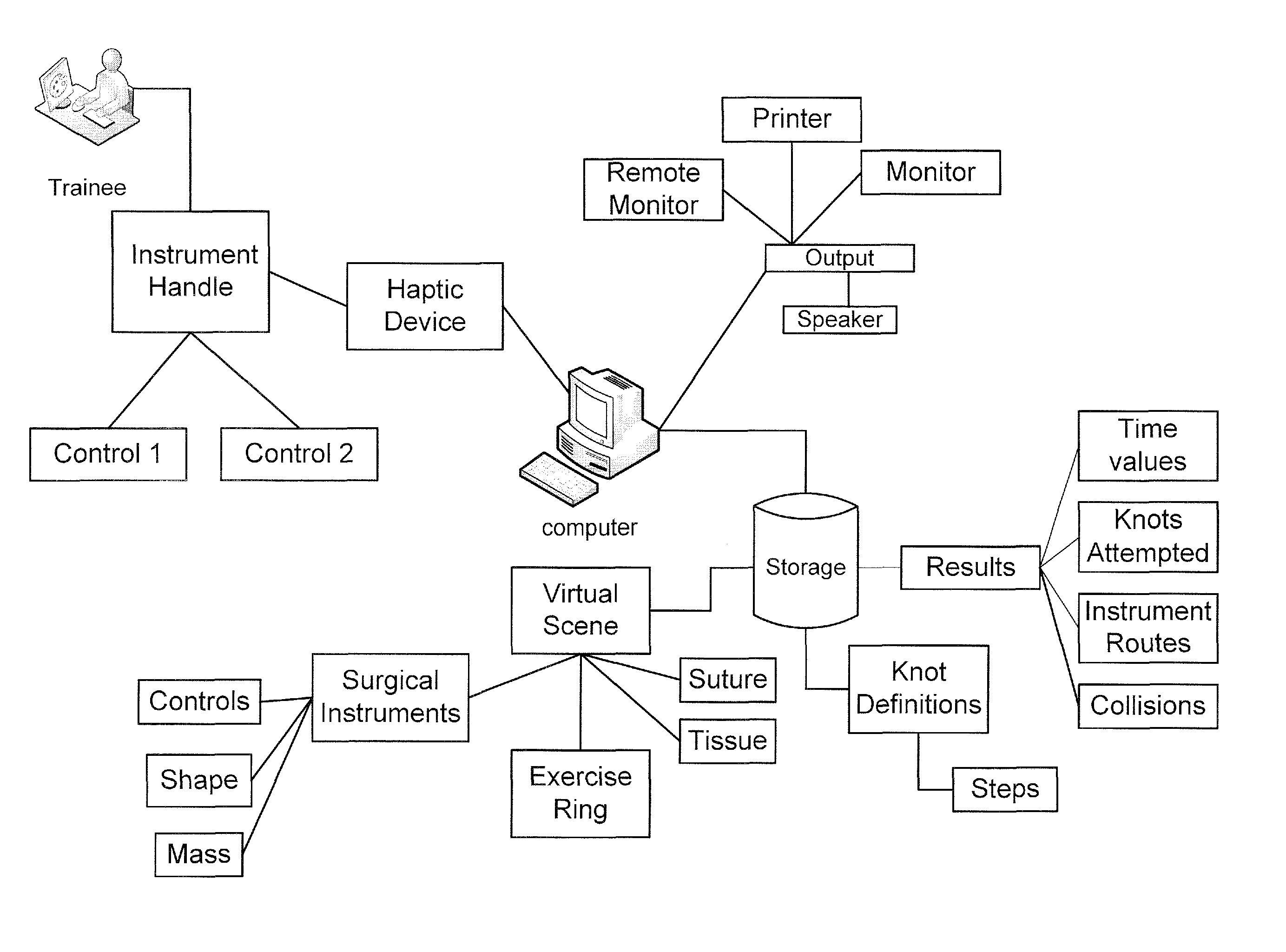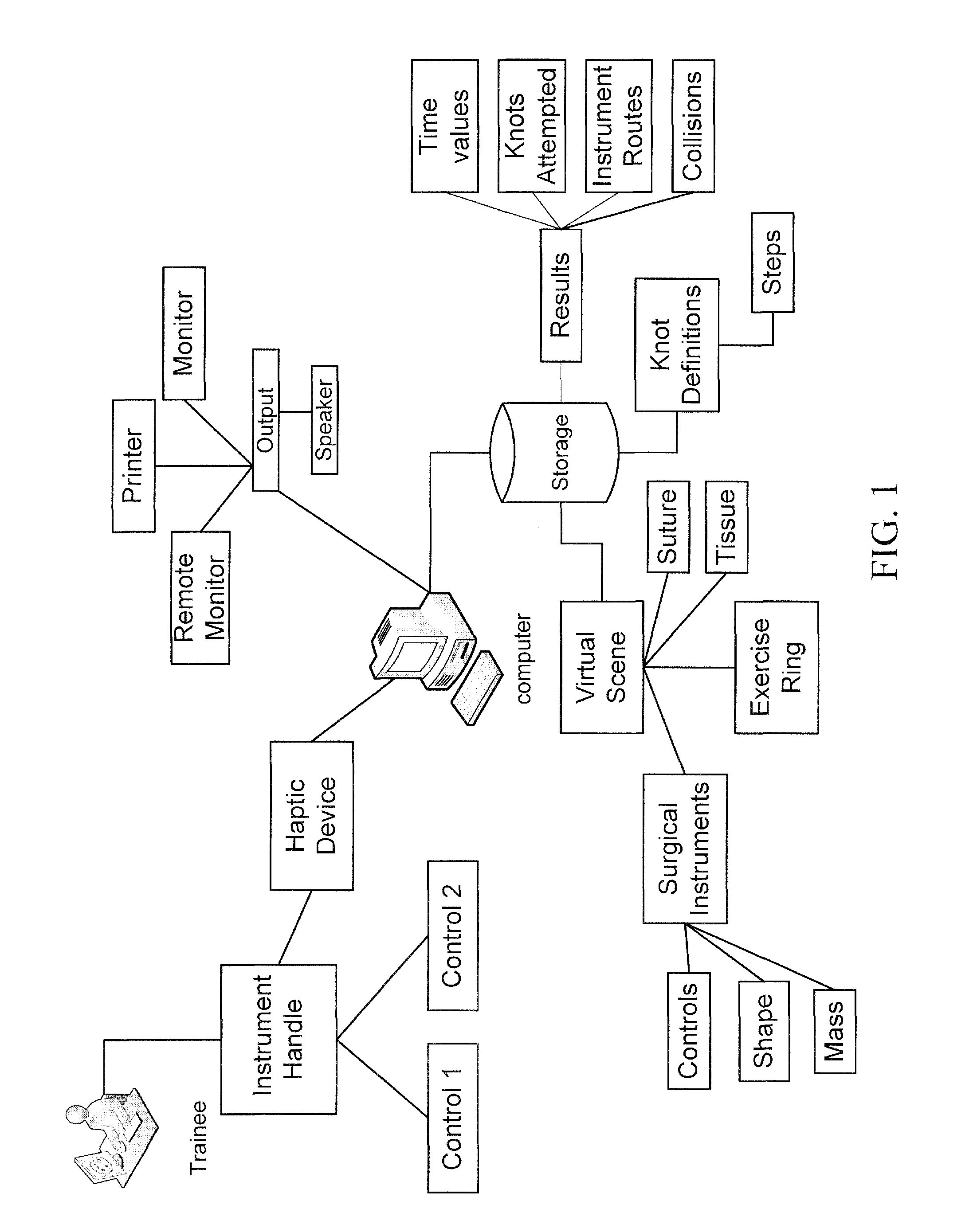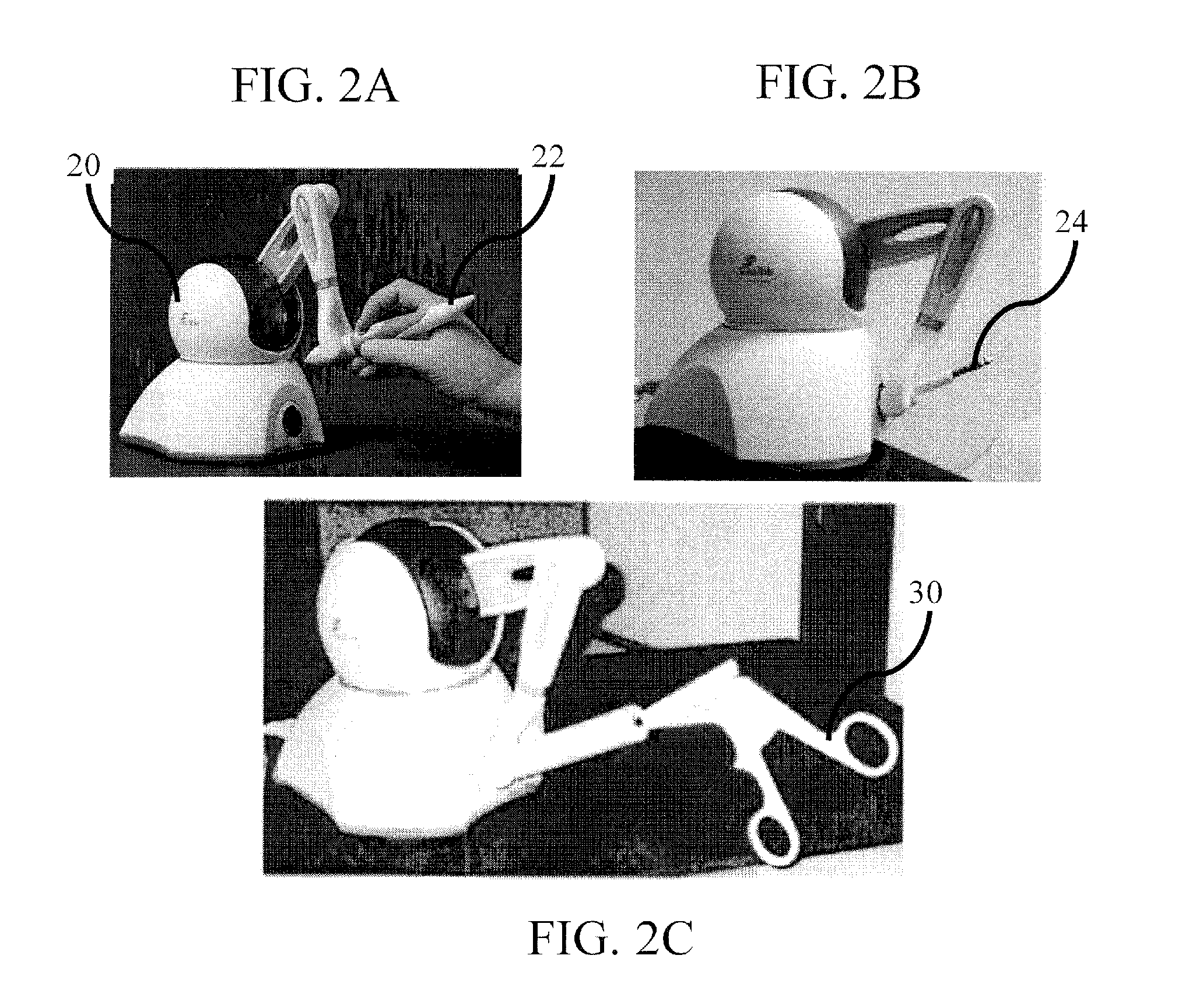Devices and methods for implementing endoscopic surgical procedures and instruments within a virtual environment
a virtual environment and surgical technology, applied in the field of minimally invasive surgical approaches, can solve the problems of significant learning curve, significant challenge for surgical educators in rapidly developing new training devices, and difficulty in implementing endoscopic surgical procedures in intracorporeal environments, and achieve the effect of convenient and realistic teaching and training environments
- Summary
- Abstract
- Description
- Claims
- Application Information
AI Technical Summary
Benefits of technology
Problems solved by technology
Method used
Image
Examples
Embodiment Construction
[0042]The subject invention is particularly useful in the field of surgical procedures and, in particular, methods and devices used for training and / or assessing the use of keyhole or endoscopic surgical instruments. Specific embodiments disclosed herein include surgical devices for grasping, shearing, or dissecting tissues, such as, for example, the ENDO GRASP™, ENDO SHEAR™, and ENDO DISSECT™ devices; the REALIZE™ Adjustable Gastric Band and associated dissector instrument (Ethicon Endo-Surgery, Inc.); and the WOLF™ Navigator™ tissue dissector (which are hereafter referred to generally as “surgical” devices). However, while the subject application describes a specific use for training and / or teaching the use of endoscopic surgical devices, other modifications apparent to a person with skill in the art and having benefit of the subject disclosure are contemplated to be within the scope of the subject invention.
[0043]The terms “surgeon” or “trainee” as used in the subject invention a...
PUM
 Login to View More
Login to View More Abstract
Description
Claims
Application Information
 Login to View More
Login to View More - R&D
- Intellectual Property
- Life Sciences
- Materials
- Tech Scout
- Unparalleled Data Quality
- Higher Quality Content
- 60% Fewer Hallucinations
Browse by: Latest US Patents, China's latest patents, Technical Efficacy Thesaurus, Application Domain, Technology Topic, Popular Technical Reports.
© 2025 PatSnap. All rights reserved.Legal|Privacy policy|Modern Slavery Act Transparency Statement|Sitemap|About US| Contact US: help@patsnap.com



